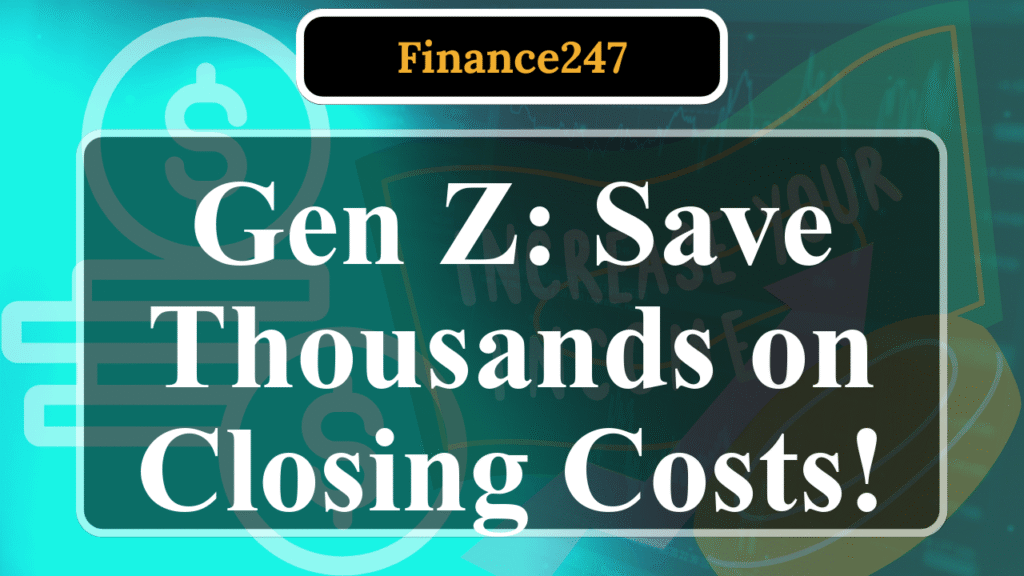“Gen Z homebuyers face unique financial challenges, but saving on closing costs is achievable. This article outlines six practical strategies, including negotiating with sellers, shopping for lenders, and leveraging assistance programs, to reduce expenses. With closing costs averaging 2-5% of a home’s price, these tips empower young buyers to navigate the housing market confidently and keep more money in their pockets.”
Proven Ways for Gen Z to Cut Home Closing Costs
1. Negotiate Seller Concessions
Gen Z buyers, often constrained by limited savings, can negotiate with sellers to cover part of the closing costs. In a buyer’s market or with properties lingering on the market, sellers may agree to pay 3-6% of the sale price toward costs like title insurance or agent commissions. For example, on a $300,000 home, this could save $9,000-$18,000. Work with a real estate agent to assess market conditions and craft an offer that includes a closing cost credit. National Association of Realtors data indicates 24% of sellers offered concessions in 2024, making this a viable strategy in less competitive markets.
2. Shop Around for Lenders and Third-Party Services
Closing costs, averaging 2-5% of the purchase price ($6,000-$15,000 on a $300,000 home), include lender fees, title insurance, and inspections. Gen Z buyers can save by comparing lenders’ origination fees, which range from 0.5-1% of the loan. Additionally, services like title insurance and settlement agents, listed in Section C of the Loan Estimate, are shoppable. A NerdWallet analysis found that comparing home insurance quotes could save up to $1,000 annually. Get at least three quotes to secure the lowest rates.
3. Opt for a No-Closing-Cost Mortgage
No-closing-cost mortgages allow buyers to roll closing fees into the loan, reducing upfront costs. While this increases the loan’s interest rate—potentially adding thousands over the loan term—it’s ideal for cash-strapped Gen Z buyers prioritizing immediate savings. For instance, on a $350,000 loan, rolling $10,500 in closing costs into the mortgage avoids out-of-pocket expenses but raises monthly payments. Compare lenders offering this option, but weigh long-term costs carefully.
4. Close at the End of the Month
Scheduling your closing date near the month’s end minimizes prepaid interest, or per diem interest, charged from the closing date to the first mortgage payment. For example, closing on June 28 versus June 2 on a $300,000 loan at 6.66% could save hundreds in interest for those 26 days. This strategy is widely known, so book your closing date early to secure a slot.
5. Leverage First-Time Homebuyer Programs
Many states and local governments offer grants or low-interest loans for first-time buyers, which Gen Z often qualifies for, given their median homebuying age of 25. These programs, like those listed by the U.S. Department of Housing and Urban Development, can cover closing costs or down payments. For example, some “soft” second mortgages are forgiven after a set period, effectively becoming grants. Check your state’s housing finance agency for eligibility.
6. Use an Attorney Opinion Letter Instead of Title Insurance
Fannie Mae’s recent policy allows buyers to replace costly title insurance (up to 1% of the purchase price, or $3,000 on a $300,000 home) with an Attorney Opinion Letter (AOL). An AOL, costing about $1,000 less, verifies a property’s title through a real estate attorney. This option, now available for most single-family loans, is a game-changer for budget-conscious Gen Z buyers.
Disclaimer: This article provides general guidance based on publicly available information from reputable sources like NerdWallet, Bankrate, and Fannie Mae. Real estate markets vary, and individual circumstances differ. Consult a financial advisor, real estate agent, or lender for personalized advice. Savings estimates are based on industry averages and may not apply to all situations.


